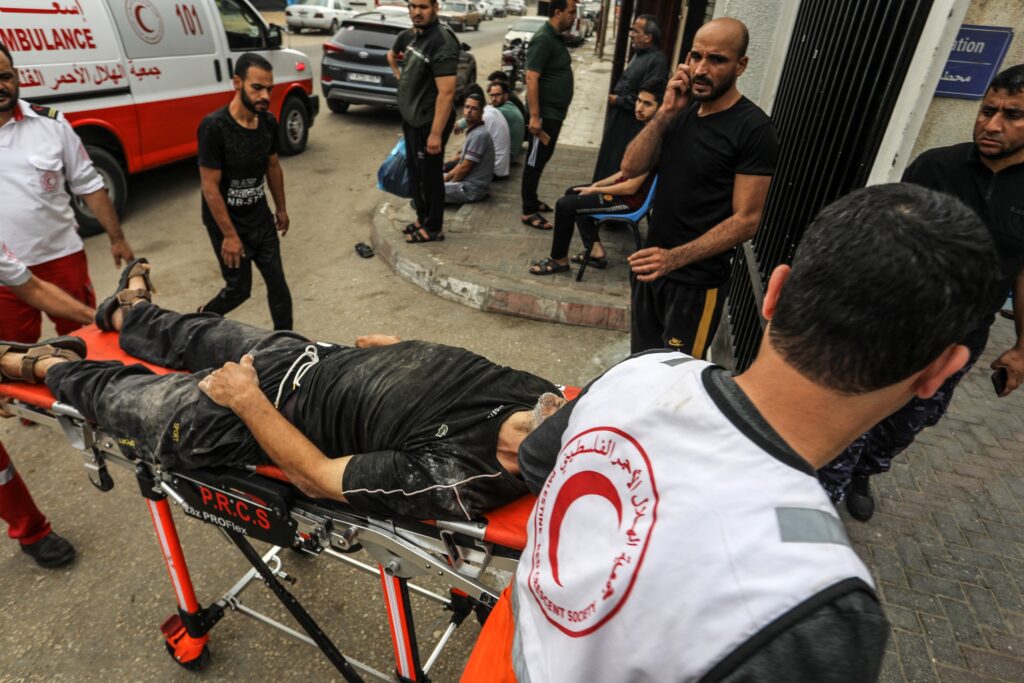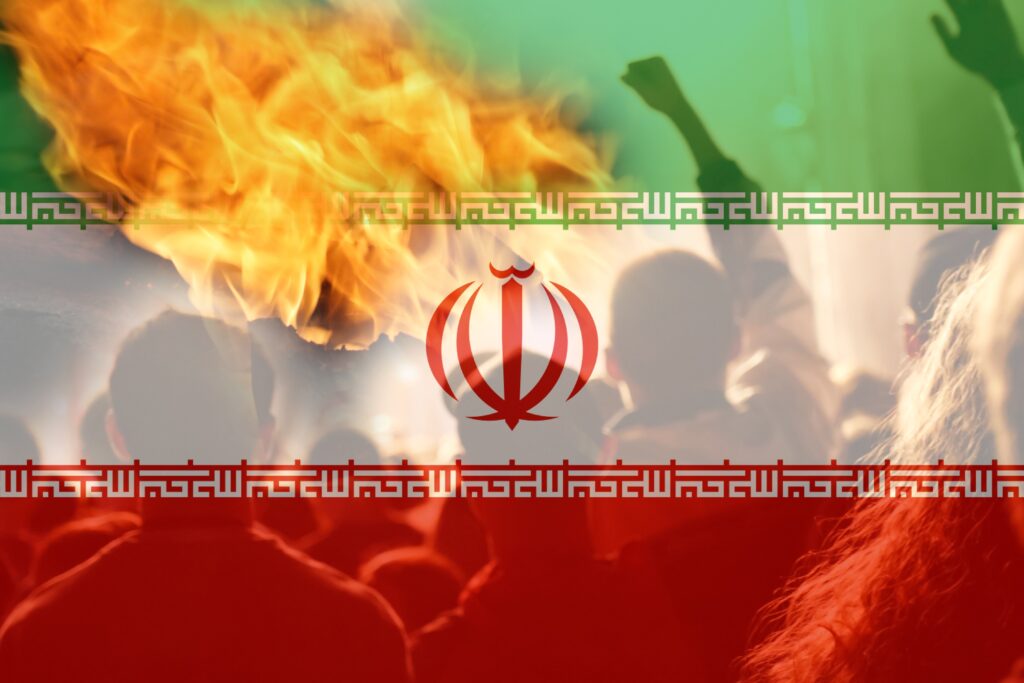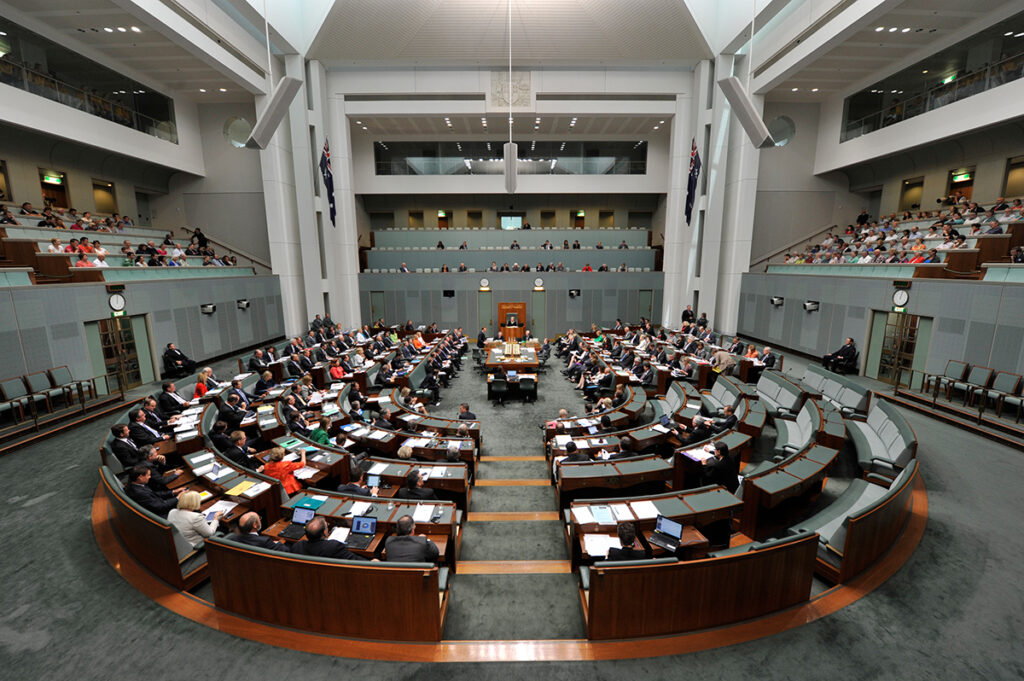IN THE MEDIA
Another plank of the extreme anti-Israel narrative collapses
July 2, 2024 | Oved Lobel

An edited version of this article appeared in the Canberra Times
The position of the most extreme anti-Israel activists, whether in the media, politics, international institutions or NGOs, regarding Israel’s war with Hamas has been based on two key planks: that the IDF is indiscriminately killing civilians and that Israel is deliberately starving Gaza’s population.
For the first assertion, they rely on casualty statistics, including gender and age breakdowns, released by Hamas-run organs in Gaza. For the second, they depend on UN agencies for the numbers of aid trucks and projections of famine in parts of Gaza.
Both planks have now collapsed.
Multiple independent analyses of the Hamas-run Ministry of Health (MoH) casualty data have long since demonstrated that the casualty numbers contained statistical anomalies indicating they were clearly heavily manipulated if not outright fabricated. All concluded that both the topline number as well as gender and age breakdowns were completely unreliable.
The most prevalent claim was that 70% of the casualties were women and children, even though this was belied by Hamas’ own data, which showed that since January 1, these groups comprised approximately 42% of hospital-registered deaths. In June, the Associated Press became the first mainstream outlet to actually look at the data rather than parrot Hamas’ claims. It found fewer than 40% of casualties in April were women and minors, in line with the rest of 2024, despite women and minors comprising about 75% of Gaza’s population.
In April, the MoH released a revised list of just over 21,300 “identified fatalities”, admitting it had “incomplete data” on more than 11,000 of the 33,000 deaths it claimed at the time, nearly half of which were based on unspecified “media sources”. Moreover, even the supposedly “identified fatalities” list was riddled with errors and duplicates. A recent analysis by the IDF of the list showed some minors were terrorist operatives; some terrorists were listed as female; and deaths unrelated to the war or from misfired rockets and Hamas IEDs were included.
One month later, the United Nations Office for Coordination of Humanitarian Affairs (OCHA) surreptitiously halved the number of women and children it claimed had been killed in the war, from more than 9,500 to 4,959 and from more than 14,500 to 7,797, respectively.
Meanwhile, Israel claims it has killed more than 14,000 terrorist operatives, and it’s important to recall that the category of “children” includes adolescent combatants, as terrorist groups in Gaza routinely recruit under-18s. Furthermore, not all these deaths are due to Israeli activity, as evidenced by the misfired rocket that killed scores in the al-Ahli Arab Hospital car park in mid-October.
Nobody knows for certain how many Palestinians have been killed or the combatant-to-civilian ratio, only that the widely reported claims are unreliable.
The second plank completely collapsed in late May, when the Integrated Food Security Phase Classification (IPC) Famine Review Committee (FRC) – the UN’s expert committee on identifying famine – released its review of the Famine Early Warning Systems Network (FEWS NET) analysis of the Northern Governorates of Gaza.
Asserting that the analysis had made unwarranted assumptions and inexplicably excluded important sources of food aid – and that there simply wasn’t nearly enough solid data – the FRC said it didn’t find the FEWS NET analysis claiming Gaza was suffering famine “plausible”. A comprehensive FRC report published June 25 concluded that “the available evidence does not indicate that Famine is currently occurring.”
The difference in estimates for kilocalories per person of the food aid entering Gaza between the FEWS NET analysis and that of the FRC is staggering. The highest estimate in the former’s original analysis said food aid entering Gaza amounted to only 51% of the population’s need. The FRC’s lowest estimate said aid entering amounted to 109% of the population’s need.
This conclusion was in line with a working paper, published by the Hebrew University’s Institute of Biochemistry, Food Science, and Nutrition, which found that enough aid was getting into Gaza to feed everyone adequately even under pessimistic scenarios of food loss. This was backed up by a more recent study by Columbia University professors Awi Federgruen and Ran Kivetz.
It is abundantly clear that the problem in Gaza is not primarily enough aid entering the territory, but distribution, as it is in nearly every war zone. Due to mass looting, destroyed infrastructure, bureaucratic delays, logistical shortfalls, UN agency fears related to deconfliction and the fighting itself, more than 1,000 truckloads of aid already in Gaza are currently awaiting pickup.
The UN and Israel also vastly differ in how they count truckloads of aid, with Israel’s Coordination of Government Activities in the Territories (COGAT) recently identifying UN “underreporting of over 8,000 trucks since the beginning of the war, with 4,880 ‘missing’ trucks in the month of May alone.”
Israel has substantially adjusted its approach since October, which is why 2024 has seen a precipitous drop in civilian casualties and a massive surge in aid. The FEWS NET famine projections and the UN in general seem to have simply ignored these facts.
The most radical activists have promoted the most extreme fantasy to paint Israeli behaviour as genocidal based on bad or manipulated data supplied by Hamas and the UN. This data itself now points in quite a different direction.
Oved Lobel is a Policy Analyst at the Australia/Israel & Jewish Affairs Council (AIJAC).
Tags: Gaza, IDF, Israel, NGOs, Palestinians, United Nations





